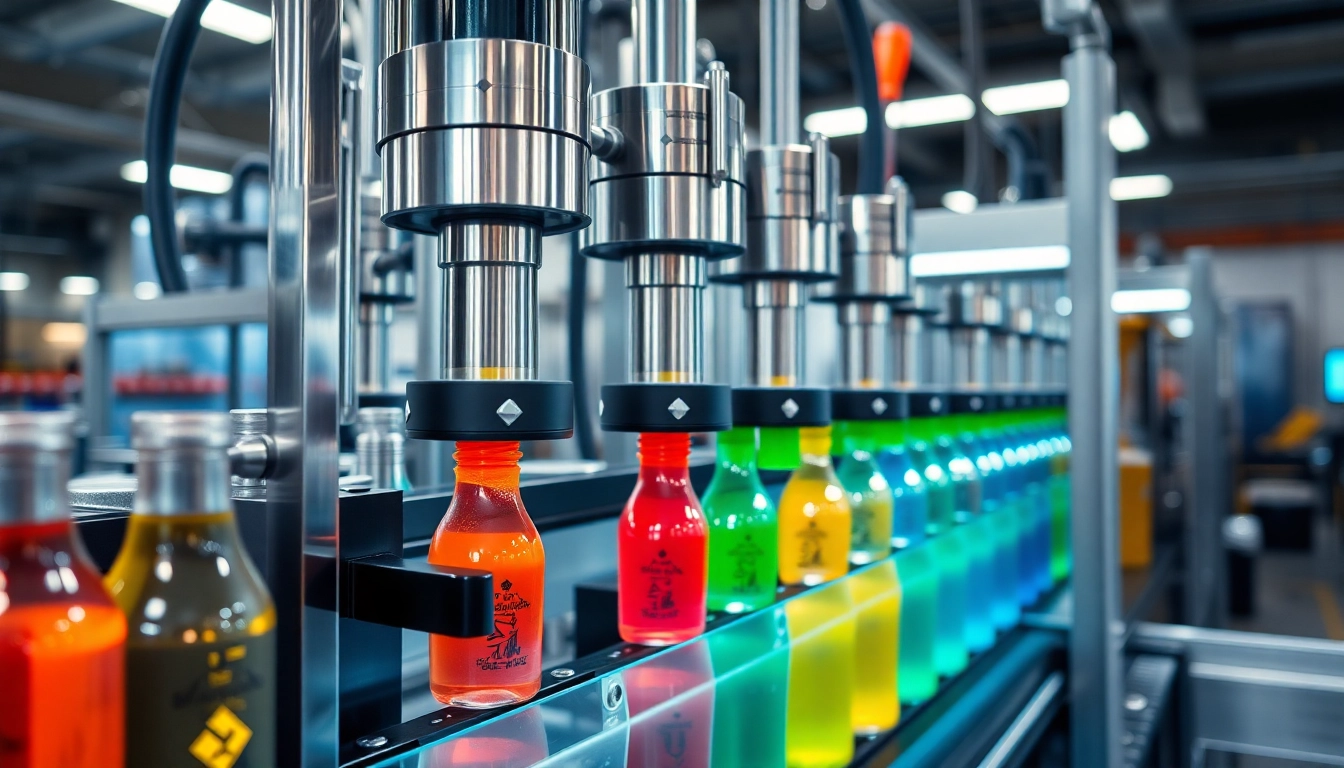Understanding Filling Machines
Filling machines are essential components in the packaging industry, crucial for a variety of sectors ranging from food and beverage to pharmaceuticals. These machines automate the process of filling containers with liquids, powders, or granulated substances, therefore enhancing productivity and ensuring consistency in product volume. In this comprehensive guide, we will explore the intricacies of Filling Machines, including their types, key features, applications, and advancements in technology.
What is a Filling Machine?
A filling machine is a piece of equipment designed for dispensing various types of substances such as liquids, powders, or granules into containers such as bottles, jars, or pouches. These machines come in several configurations, tailored to meet the specific requirements of different products and industries. The basic operation typically involves the machine receiving a predetermined volume of product and transferring it into a container in a controlled manner. This process is meticulously designed to minimize waste and enhance efficiency.
The Importance of Filling Machines in Manufacturing
Filling machines are vital for several reasons. Firstly, they boost efficiency in production lines by reducing the time taken to fill containers compared to manual processes. Secondly, they ensure accuracy and consistency, which is particularly important in industries like food and pharmaceuticals, where product specifications must be strictly adhered to. Moreover, filling machines help in minimizing product spoilage, as automated systems are more precisely controlled than manual operations.
Types of Filling Machines: Manual, Semi-Automatic, and Fully Automatic
Filling machines can be classified based on their level of automation:
- Manual Filling Machines: These require manual intervention for operating. Operators fill containers by hand and are suitable for small-scale operations or products that require careful handling.
- Semi-Automatic Filling Machines: These machines combine manual and automated processes. The operator typically places the containers, but the filling is performed automatically. They are ideal for medium-sized operations that require flexibility.
- Fully Automatic Filling Machines: Completely automated, these machines can operate independently and are designed for high-volume production. They are optimized for speed and efficiency, with advanced features like digital controls and integration with other packaging processes.
Key Features of Filling Machines
Precision and Accuracy in Product Filling
One of the paramount features of filling machines is their ability to deliver precise and accurate filling volumes. Modern machines utilize advanced technologies such as servo motors and load cells to measure and dispense exact quantities. This accuracy helps manufacturers maintain quality standards and meet regulatory requirements, especially concerning hazardous materials or consumables.
Automation and Efficiency Benefits
Automation in filling machines significantly improves the efficiency of the production line. Automatic machines can perform a series of tasks simultaneously, such as filling, capping, and labeling. This multi-tasking capability reduces operational costs by minimizing labor and reducing production time, enabling companies to increase output without compromising quality.
Material Considerations for Filling Machines
Material compatibility is crucial when choosing a filling machine. These machines can be designed to work with a range of materials, including glass, plastic, and metal. Each material may require different filling techniques; for example, glass bottles are often used for premium beverages, while plastics might be selected for cost-effective packaging. Manufacturers must consider chemical compatibility, safety, and the impact on product integrity when selecting filling machines.
Applications of Filling Machines Across Industries
Food and Beverage Industry
In the food and beverage sector, filling machines must adhere to strict hygiene standards. They are utilized for filling liquid products like juices, sauces, and dairy, as well as solid products like grains and snacks. The machines used are designed to handle varying viscosities and preserve the integrity of the food products, ensuring they meet health regulations.
Pharmaceutical and Cosmetic Applications
Pharmaceutical manufacturers use filling machines to package liquids, creams, and powders in sterile conditions. The precision required in this industry is paramount, as it directly affects the efficacy of medications. Similarly, cosmetic products, including lotions and serums, require filling machines that can manage different viscosities while maintaining hygiene and avoiding contamination.
Chemical Industry Use Cases
The chemical industry makes extensive use of filling machines for packaging hazardous materials. Machines must be specifically designed to handle corrosive or volatile substances safely. These machines incorporate features such as explosion-proof enclosures and advanced safety measures to protect both the operators and the environment.
Choosing the Right Filling Machine
Factors to Consider Before Purchase
When selecting a filling machine, manufacturers should consider several factors, including:
- Product Type: The nature of the product—liquid, powder, or granule—will dictate which type of filling machine is needed.
- Production Volume: Understanding the required output can help identify whether a manual, semi-automatic, or fully automatic machine is most appropriate.
- Budget: Pricing for filling machines can vary significantly. It is vital to balance the upfront cost with long-term operational efficiency and maintenance expenses.
- Space Requirements: Some filling machines may require more space than others, so it’s important to measure the available space in the production area.
Cost vs. Value Analysis
While the purchase price is an important consideration, manufacturers should also conduct a value analysis. This involves assessing the machine’s operational costs, efficiency gains, and potential for scaling production. A machine with a higher initial investment may offer greater returns through increased productivity and reduced wastage.
Maintenance Tips for Longevity
Regular maintenance is crucial for the longevity of filling machines. Key maintenance tips include:
- Regular Cleaning: Keeping the machine clean from residue buildup will prevent malfunctions and maintain hygiene standards.
- Scheduled Inspections: Periodic check-ups can identify wear and tear before they lead to significant issues, ensuring the machine operates smoothly.
- Replacement Parts: Keeping a stock of commonly needed replacement parts can minimize downtime during repairs.
Innovations in Filling Machine Technology
Latest Trends in Automation
The filling machine landscape is evolving with new trends in automation, such as AI integration and IoT connectivity. These technological advancements allow for real-time monitoring and data analysis, leading to finer adjustments in production processes. Predictive maintenance is also becoming common, where machines can self-diagnose issues before they cause failures.
Eco-Friendly Options and Sustainability
As the global focus on sustainability grows, many filling machine manufacturers are exploring eco-friendly materials and designs. This includes machines designed to reduce waste and energy consumption, as well as those built to accommodate environmentally friendly packaging solutions.
Future Directions for Filling Machine Development
The future of filling machines will likely emphasize customization and smart technology. Manufacturers may seek filling solutions that can be easily modified to accommodate a wider range of products and container sizes. Innovations in robotics could further automate the filling process, enhancing efficiency while reducing labor costs. As the industry progresses, integrating sustainable practices into filling operations will also be an ongoing focus.








